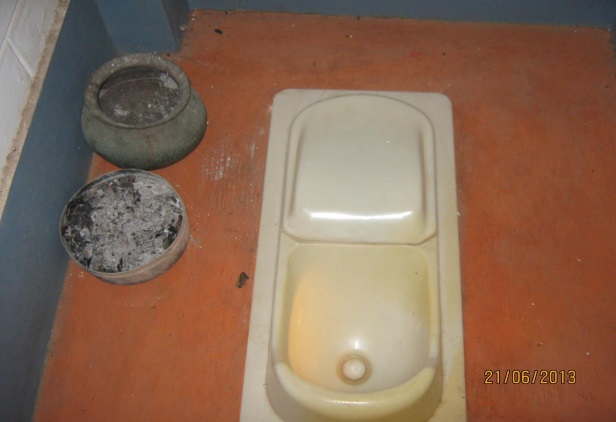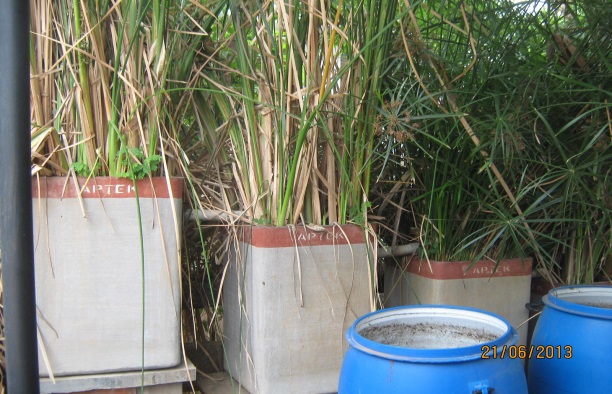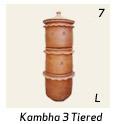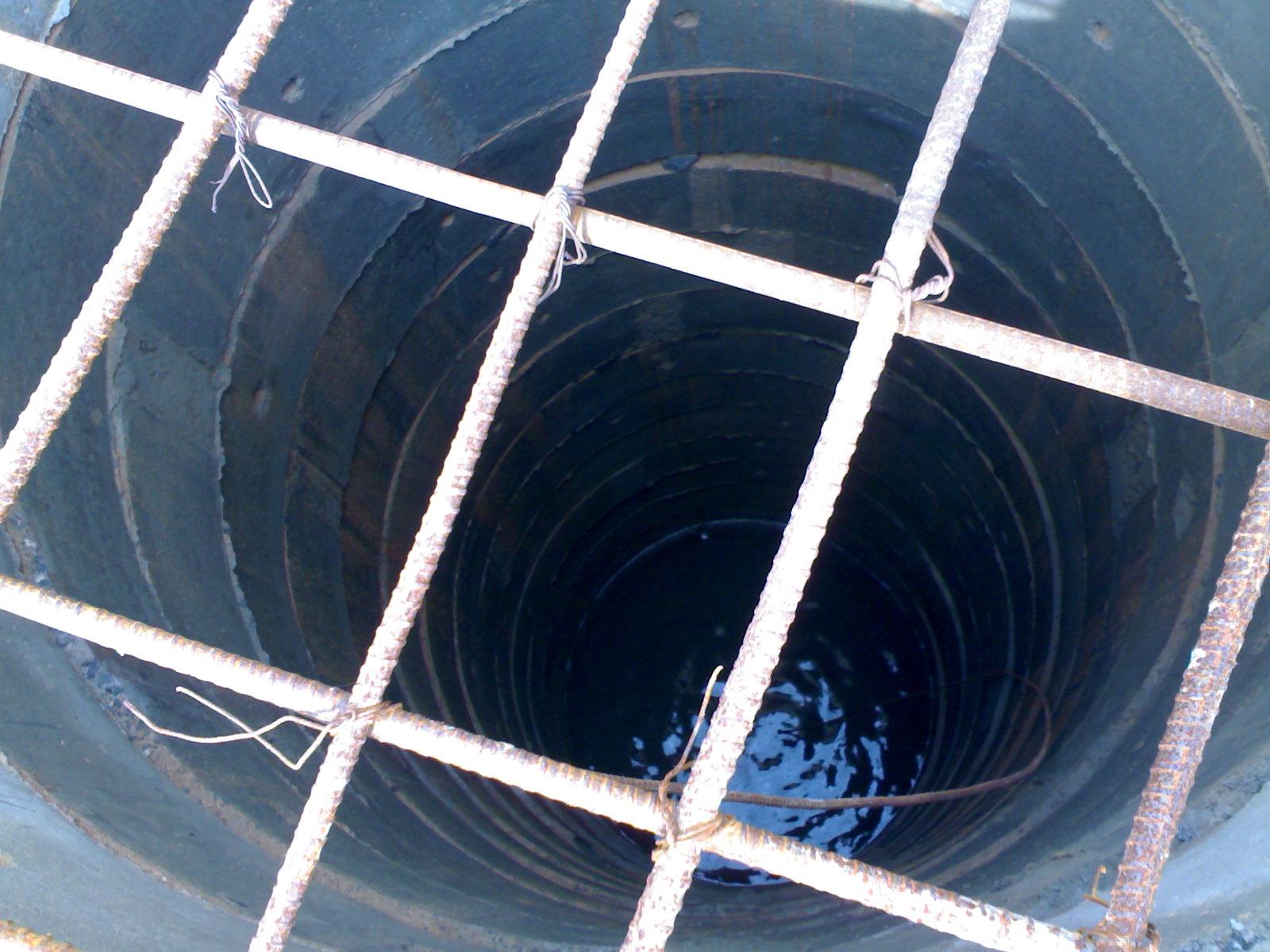“I want to live in a house like this!” was my first thought when I entered Vishwanath’s home. (Vishwanath is Founder, Director of Biome Solutions). My colleague and I had gone to visit his house to see and understand how he has implemented ranwater harvesting systems and other green initiatives there. The house, built of bricks, stone and a minimal quantity of cement, was so pretty to look at. The temperature dropped noticeably when we stepped inside as the bricks provide a natural barrier from the heat. The entire house projected a natural, old-world charm. It also seemed simple both in its design and decoration. We couldn't wait to have a look at the entire house.
Maitri Dore, a young architect was going to explain the systems that Vishwanath has implemented in his house to make it self-reliant for water. We started our tour with the terrace, which had a charming rooftop garden. We could see pipes running down the sides of the house and tanks and drums scattered around the place.
Maitri showed us to the toilet, which looked normal enough from the outside. Inside  however, there was a curious device that looked like a toilet, but not quite. It was an eco san toilet. This type of toilet does not require water or flushing. The waste after toilet use is covered with a layer of ash and leaves. Special microbes present on the toilet convert it into manure in a short span of time. The manure goes to a collecting tin under the toilet and is used to maintain the rooftop garden.
however, there was a curious device that looked like a toilet, but not quite. It was an eco san toilet. This type of toilet does not require water or flushing. The waste after toilet use is covered with a layer of ash and leaves. Special microbes present on the toilet convert it into manure in a short span of time. The manure goes to a collecting tin under the toilet and is used to maintain the rooftop garden.
There was a small bio gas unit in one corner of the terrace. We were unable to find out exactly how it functioned, but we knew that the biogas produced was used as fuel in the kitchen.
We then moved to a series of potted plants, connected to each other by pipes. The grey water produced after bathing and by the washing machine was transferred with the help of pipes into the pots. The roots of the plants removed all harmful chemicals from the water leaving behind clean water which was used for gardening purposes. Hardly any maintenance was required by the plants other than having to be trimmed once a year to prevent them from becoming too over-grown.
produced after bathing and by the washing machine was transferred with the help of pipes into the pots. The roots of the plants removed all harmful chemicals from the water leaving behind clean water which was used for gardening purposes. Hardly any maintenance was required by the plants other than having to be trimmed once a year to prevent them from becoming too over-grown.

The house had a roof-top rainwater harvesting system, which was designed very simply. Water collected on the terrace after the rains flowed into pipes, which were connected to a 500L tank and a sump tank. A short section of the pipe, called ‘first rain separator’ was used to collect the initial rainwater that contained impurities. The length of the first rain separator was calculated according to the area of the terrace. The pure water then flowed into the tank. A simple four-fold cloth sufficed as a filter for the rainwater.
Maitri told us that the water from the tanks, which was stored in the underground sumps would sustain a family of four for about 210 days. The size of the sump was calculated baed on various factors, such as the number of people living in the house, the amount of rainfall the place received, etc.
 Our next stop was the garden. It was pleasantly messy, with creepers and tendrils trailing down, creating a green, fairy-like haven. A curious contraption that looked like three plant pots placed one on top of the other was sitting innocuously in a corner of the garden. Maitri explained that it was an organic waste converter. Wet, organic waste from the kitchen was deposited into the converter every day and was converted into compost, which was used to maintain the plants in the garden.
Our next stop was the garden. It was pleasantly messy, with creepers and tendrils trailing down, creating a green, fairy-like haven. A curious contraption that looked like three plant pots placed one on top of the other was sitting innocuously in a corner of the garden. Maitri explained that it was an organic waste converter. Wet, organic waste from the kitchen was deposited into the converter every day and was converted into compost, which was used to maintain the plants in the garden.
A small tank connected by pipes to the kitchen functioned as a water purification system. This worked on a very simple principle. Water from the kitchen, containing oils and other heavy organic chemicals, flowed into the tank. The oils and chemicals settled down, leaving relatively clean water on top. This water was moved into a small pond where they grew fish. We peeped into the pond and saw hundreds of tiny fish and tadpoles swimming about.
Lastly, we saw a small well-like structure outside the house covered by a grill for safety purposes. It collected rainwater and the overflow from the sump tanks and returned the water back to the ground. The layers of sand and grains in the ground provided a natural, more-than-effective filter and also helped preserve the depleting groundwater reserves. 
Small pots were randoomly scattered around the garden, covered with cloth filters that contained activated charcoal. These collected rainwater and then absorbed the dissolved gases, leaving clean water behind.
Many other houses in the neighbourhood had implemented water harvesting systems designed by architects working for Biome Solutions. They were all impressive, but none had managed to incorporate everything that Vishwanath had at his own home. Overall, the new technologies we learnt about and the simplicity of solutions that we saw made the afternoon well worth the long drive through traffic.
/articles/green-house-no-other-0